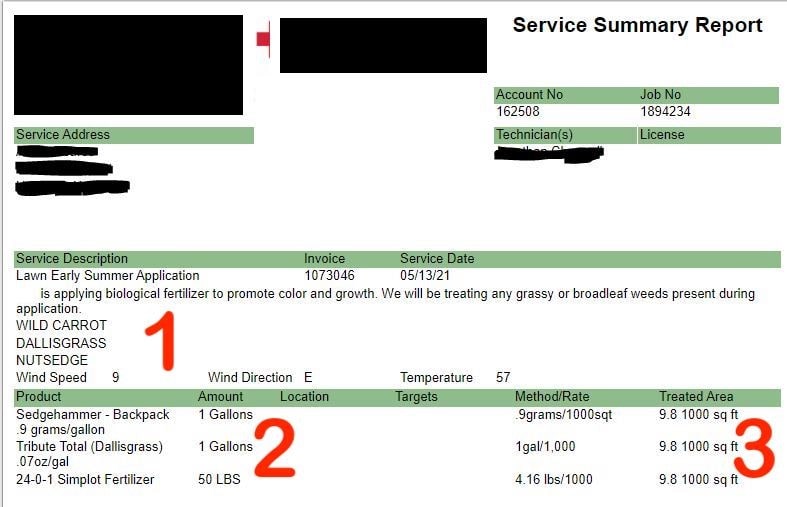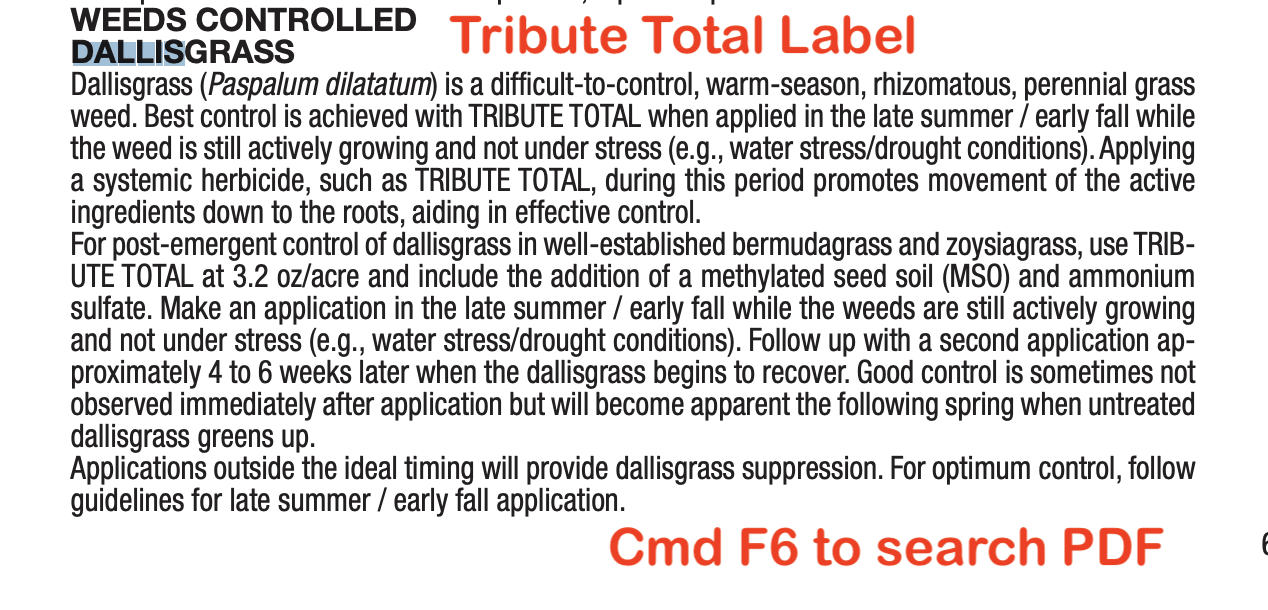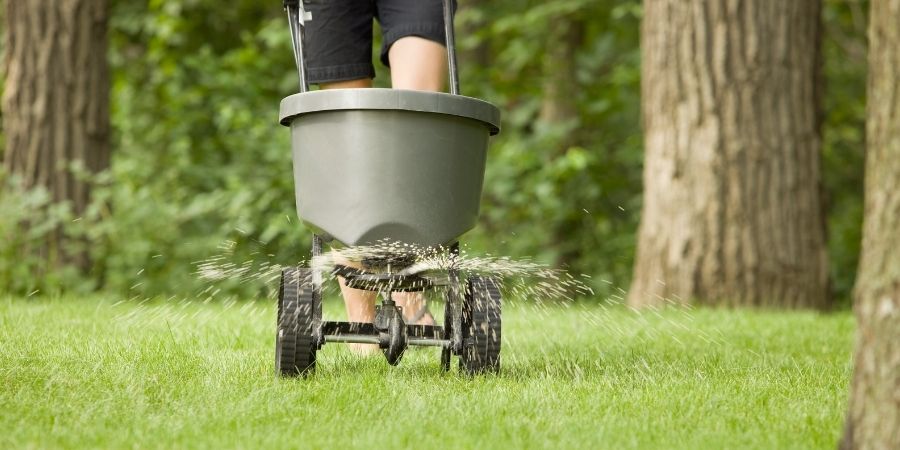Getting the Most From Your Lawn Service Company
- "The Lawn Care Nut"July 9, 2022
Over the last 25 years, I’ve been working with homeowners and DIYers and their lawns. The first 15 years I worked in the green industry for the largest lawn spraying company in the US and for the last 10 years, I’ve been working directly with DIYers online.
With that I thought in this month’s blog post it would be fun to talk to those of you who currently have a professional lawn service treating your property. And this will also then be useful to those of you who may be looking for a new lawn service.
My end goal here is to help you better understand what you are paying for, and as a result, get the most benefit from every service. If you take even one or two of these tips and apply them to your current lawn service, you can maximize the results you get - and that starts with educating yourself.
The key to it all is to be curious to learn. You are paying for a service that actually has to rely on you for a good portion of the results. The lawn company can make perfect applications of the perfect nutrients, weed control, and other fun stuff but if you, the homeowner, doesn’t do your part with watering things in, or keeping the lawn mowed often, all of the results of the spray company could be for nothing.
It’s a team effort between the both of you and one way for a team to work better together is to get on the same page. The easiest way to do that is with each invoice page that is left on your door with each service.
Let’s look at an invoice. This is an actual invoice from a licensed lawn treatment company. I have permission from the homeowner to use this and I have done my best to black out the name and address of the actual company. The goal here is the education of the homeowner (that’s you) so the company name doesn't really matter anyway.
This is a warm-season lawn in Alabama.

Invoice Box #1
The first thing that stands out here to me is the name of the service performed is “Lawn Early Summer Application” and the date is May 13. I’m not sure how that really works because the first official day of summer was June 20.
Other than that in box 1 we see a basic description of what was done and why, and what weeds were targeted.
Invoice Box #2
In box 2 we see the names of what was applied. This is where you can start to educate yourself. Google search those product names and find out what they do. If you are so inclined, read the label from the product too. Here you may find information about whether or not the product should be watered in. You will also find information about re-entering an area that has been sprayed.
(usually, these items/cautions are also listed on the invoice from your spray company - in the case of this example, I was only supplied with this single page.)
Sedgehammer is a product that targets the nutsedge mentioned in box 1. The active ingredient in Sedgehammer is Halosulfuron-methyl. You could use this information to further search pictures of Nutsedge that you will know what it looks like in your lawn when you see it down the road.
The other product listed is called “Tribute Total” and that one has active ingredients are Foramsulfuron 19.8%, Halosulfuron-methyl 30.8%, Thiencarbazone-methyl 9.9%.
Tribute total targets many different weeds in the lawn but the service company has told you their primary target and that being Dallisgrass. One thing I did was found the PDF label of Tribute Total online and read a section about Dallisgrass for myself:

The way I found that is once I opened the PDF on my Mac I did a search of the PDF for the word “dallis” and then it was easy to find this section. On Mac it’s Command F6 to search.
What I learned here is that dallis grass is going to be a tough one to eradicate because not only does it spread by rhizomes, but it’s also perennial so the same plants come back year after year. Knowing this will help me to have patience with the lawn company as they work on it knowing that this is not a “one and done” type problem.
One other thing that is interesting to me is they doubled up on the active ingredient Halosulfuron because it’s in both weed controls. It does appear that one product, the Sedgehammer, was applied as a spot spray since a backpack was used and it looks like the Tribute Total was blanket sprayed. So maybe the technician pulled out the backpack to clean up a couple of spots of nutsedge that he missed or wanted to target specifically instead. I was able to deduce all of this just by reading Section 2.
Invoice Box #3
Then in section 3, you can see the square footage that was treated and on this invoice, we see it’s 9,800 sq ft. What I recommend you do here is actually go out and measure the lawn yourself to see if you actually have 9,800 sq ft. It’s ok if they are off by 500-700 sq ft or so, no one is perfect in measuring, especially if your lawn is not all in perfect squares. But if you find that you are off by 3,000 or more from what they have, you may want to request a re-measure of your lawn so that all the numbers come out accurately.

Fertilizer Used
Now let’s go back to section 2. See the fertilizer there listed? It’s Simplot 24-0-1 and they indicate that 50lbs of that fertilizer was applied to the lawn. Remember, we have the lawn listed as 9,800 sq ft. Now we can look at how many nutrients they applied by doing some simple math.
Remember, the 24-0-1 is called the “analysis” and it means that 24% of everything in the bag is nitrogen and 1% is potassium.
If they applied 50lbs of that fertilizer to a lawn that is 9,800 sq ft, that means their application rate was 5.1 lbs per 1,000 sq ft.
The way we get that is to take the total “pounds on the ground” which is 50 and divide that by the sq ft remembering that in lawn care we always calculate by 1,000 sq ft increments.
50/9.8 = 5.1
We can now find out how much actual nitrogen went down because remember, nitrogen drives the bus and we want to see how much driving is actually being done here:
5.1 x 24% = 1.22.
That means that 1.22 lbs of N was applied to each 1,000 sq ft area.
That’s a pretty heavy application there at 1.22 lbs of nitrogen per 1,000 sq ft. I’m sure this customer found a really nice green-up after this application! One thing I don’t have here is a breakdown of the actual nitrogen components. Some of them could be sulfur-coated urea or polymer-coated urea which makes the nitrogen slow release over time. There could be other elements also making up the nitrogen stack that are also slow release.
The thing about it is, this really isn’t a heavy application for warm-season turf in Alabama in later May. Even though the invoice on that day shows only 57 degrees, I’m sure that was a very short-lived cool spell for that area. Alabama heats up pretty nicely in May and the days are also getting longer so warm-season grass is waking up to run run run right about that time.
Kicking it in the pants with some nitrogen isn’t a bad thing at all really, especially if a good portion of that nitrogen is slow release.
And this is where some of your education could come in. If this was your invoice, you may want to call in and ask about the makeup of that nitrogen and find out how much actually is slow release. You may also want to ask them if they want you to water it in or not and how long you would expect to see results. These are all great questions that would help your lawn company further educate you on what to expect and how to get the most from it!
I’ll see you in the lawn!
AL

